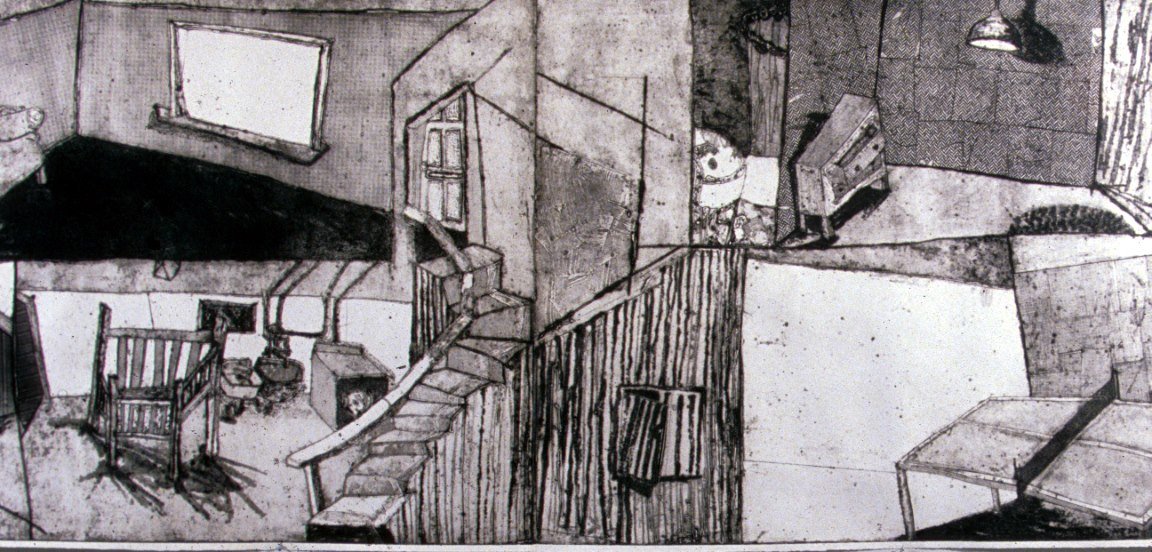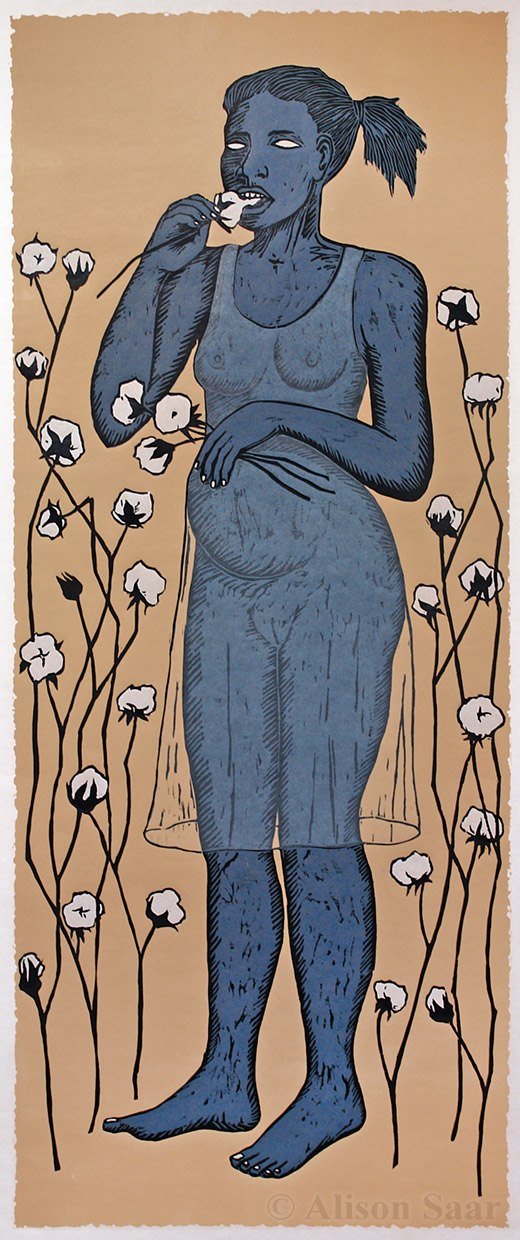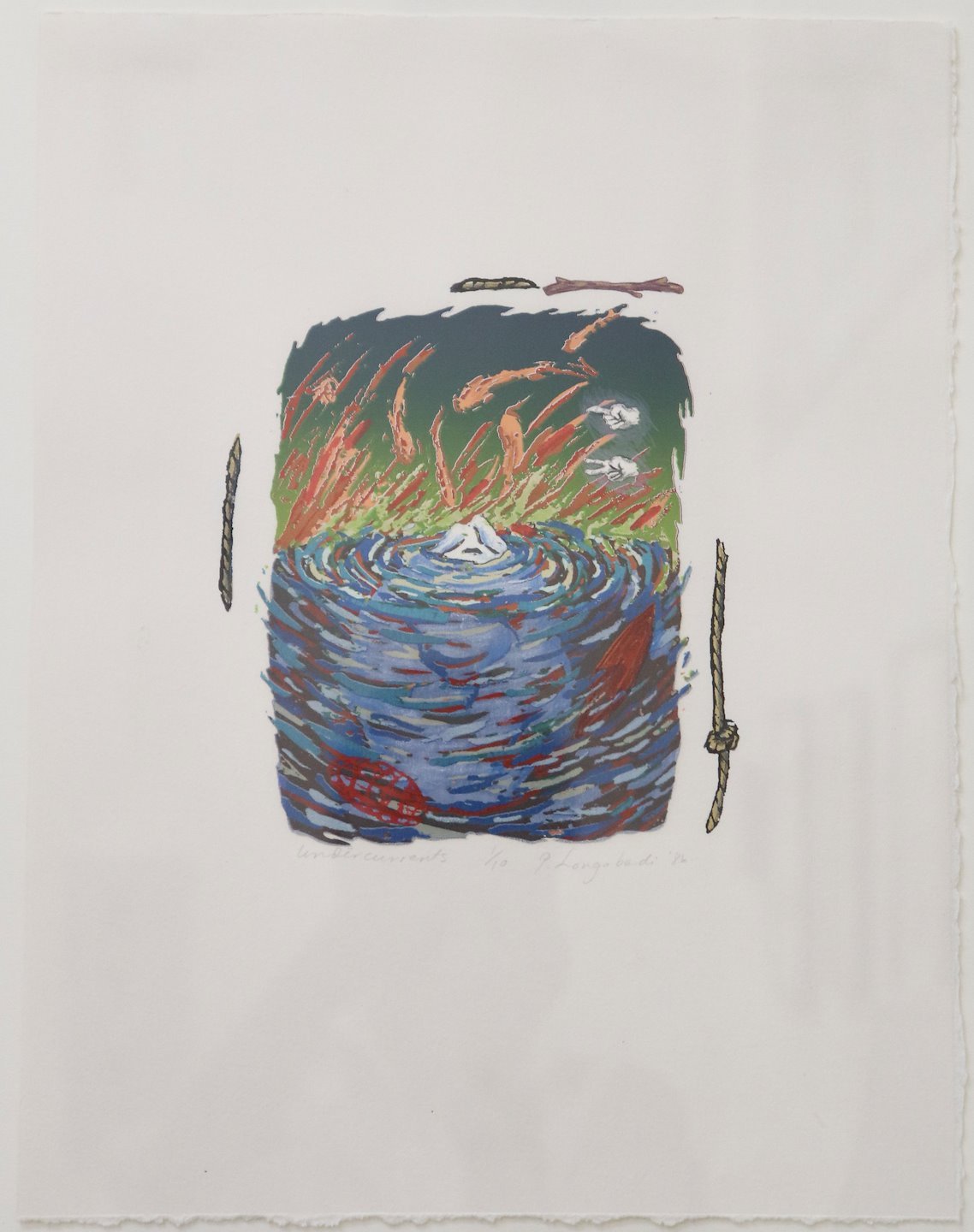Women Printmakers
-
Katja Oxman was born in Munich in 1942 and has childhood memories of the horrors of World War II. She began her education in art at the Pennsylvania Academy of Fine Arts, and was attracted to printmaking very early and began making large woodcuts while at the Academy.
While Katja Oxman’s prints are fastidiously lucid transcriptions of the still life arrangements from which they are derived, the impulse behind them and her poetic temperament lies closer to Joseph Cornell and his boxes than the literalism that characterizes so much of contemporary American realism. His enigmatic cabinets filled with disparate, dreamlike assemblages of mirrors, snippets of ribbons, fragments of old maps, chromolithographs, and reproductions of paintings are among the most deeply personal works in twentieth century American art.
Oxman’s still lifes allude to a tranquil, interior world. Their unidentifiable space serves as miniature rooms where seemingly nothing occurs beyond their perimeters. The prints are structured like tableaus and appear to be settings for parables with unknown or half-remembered connotations and pay homage to the artist’s private history and cultural past. Each composition is filled with an elegant and a deeply personal array of objects.
In addition to the closed, secretive boxes, fruits, and orchids there are colorful feathers, small birds and other subtle references to air and flight. Another constant is her use of Oriental rugs and a wide assortment of postcards, announcements, and reproductions of paintings. While grounding the objects, the carpets provide an intricate, geometrically patterned foundation with an exotic cultural history. The postcards establish an orderly—if at times jittering—Mondrian-like grid in her interior space while simultaneously providing visual puns and paying homage to the art and artists she admires.
— Bio courtesy of the artist's website.
-
Bethany Collins, born in Montgomery, Alabama, is a multidisciplinary artist known for her profound exploration of race and language. She completed her MFA at Georgia State University in Atlanta, Georgia in 2012. Her work deeply engages with themes of identity, race, and power, examining the biases, contradictions, and histories of violence embedded in language. Utilizing various documents, such as nineteenth-century musical scores and legal reports, Collins erases, obscures, and rewrites portions of text to highlight the complexities and tensions in the language used. Through her art, she invites viewers to reconsider the language shaping their understanding of race and identity, emphasizing the enduring impact of these constructs on society.
-
Nell Ruby, Professor of Art at Agnes Scott, is a mixed-media installation artist interested in exploring the experience of perception. Using common materials, direct drawing and projected video in large-scale site-specific works, Ruby transforms solid walls into rolling hills, blue skies and seemingly endless planes of light. Imbued with this sense of play, Ruby’s work also brings to mind the darker undertones of a more serious world, one that juxtaposes public and private space, performance and observation, fears and dreamlike experiences.
-
Inspired by the Greek mythology of the Lotus Eaters, who consumed the narcotic lotus fruit and fell into a state of apathy, Alison Saar's Cotton Eater engages with profound historical and social narratives.
This print depicts a near-life-sized female figure standing in a cotton field, consuming cotton bolls. The image serves as a powerful symbol, connecting the exploitation inherent in cotton production with the history of slavery. The print also speaks of a generation of the poor, with the cotton bolls symbolizing the non-nutritive, hollow promises the government made to them. The figure's distended stomach illustrates the physical and metaphorical malnourishment resulting from these empty assurances.
-
In No Pattern Necessary, a variety of women's heads are scattered across a dress pattern. The dress pattern is pink and has a slight shimmer, proclaiming its feminine affiliation. The lines of the dress pattern are bold, symbolically underscoring the boundaries that society sets for women. Because this work is a print and uses found imagery, the ideas of conformity and pattern are fostered by the possibility of duplication. No two heads are exactly identical. They vary in scale, clarity, facial features, direction of gaze, and hairstyle.
For Jennifer Mack, hairstyle is a natural way to explore women's roles and experiences because she grew up observing her cosmetologist mother's interactions with a variety of customers. Mack understands choice, in physical appearance and other life decisions, as a way for women to assert power against society's boundaries, stating in an interview that she is "not interested in fitting into one shape or size." Because Mack is Black, her work offers insight into both gender and racial identities, Mack also is interested in further cultural exploration, experimenting, for instance, with Japanese printmaking techniques. On the whole, Mack uses her work to explore society's expectations for identity and present an assortment of responses.
This aim is clear in No Pattern Necessary because the viewer first sees an array of similar faces and then realizes the nuanced differences. that define them. The pink dress pattern foregrounds this search for the meaning of individual identity in contemporary society.
This piece was the very first Seniors Select Purchase in 2011.
-
Pam Longobardi’s artwork involves painting, photography, and installation to address the psychological relationship of humans to the natural world. She has exhibited across the US and in Greece, Monaco, Germany, Finland, Slovakia, China, Japan, Italy, Spain, Belgium, Costa Rica, and Poland. She currently lives and works in Atlanta as Regents’ Professor and Distinguished Professor of Art at Georgia State University.
— Bio courtesy of Sandler Hudson Gallery.
-
Jiha Moon, who was the Kirk Visiting Artist at Agnes Scott for the 2012-2013 academic year, incorporates both traditional and contemporary styles and influences into her work. For instance, she makes norigaes, traditional Korean accessories for women, with synthetic hair in bright colors and neon plastic pony beads. In these screen prints, from the Detourist series, Disney characters are inserted into traditional Asian imagery.
-
Artist's Statement:
"The goal of my image-making is to question the parameters of representation, to create a woman subject who reclaims authority over her own body in the presence of the viewer's gaze. My large-scale, mixed-media drawings, friezes of prints, and artist's books are presented as an invitation to explore the way we experience our own bodies and to reveal, on some level, our cultural expectations when viewing images of the female body.
Technically my work encompasses methods from both traditional and contemporary drawing and printmaking methods. Drawn originally from a large collection of my photographs, many of the images are initiated as small woodcuts, drawings, or computer-manipulated prints. Some relief prints are cut directly into 40" × 50" blocks for printing. After the initial image is laid down via woodcut, silk-screen, or lithography, the pieces are often built up with overlays of woodcut flats and occasionally hand coloring.
Both the drawings and prints have text overlaid using silkscreen or a Xerox transfer technique in which the Xerox is treated much like a lithograph and rolled up with ink and then printed. Replications afforded by the media of printmaking have enabled me to develop a series of image friezes. These images can be displayed individually or more dramatically as an installation or in artist book form, due to scale and repetition of forms."
—
Anne Beidler has been a practicing artist, scholar and teacher for more than 35 years. She was on the faculty of Agnes Scott, 1992-2023, where she was a Professor in the Department of Art and Art History.















